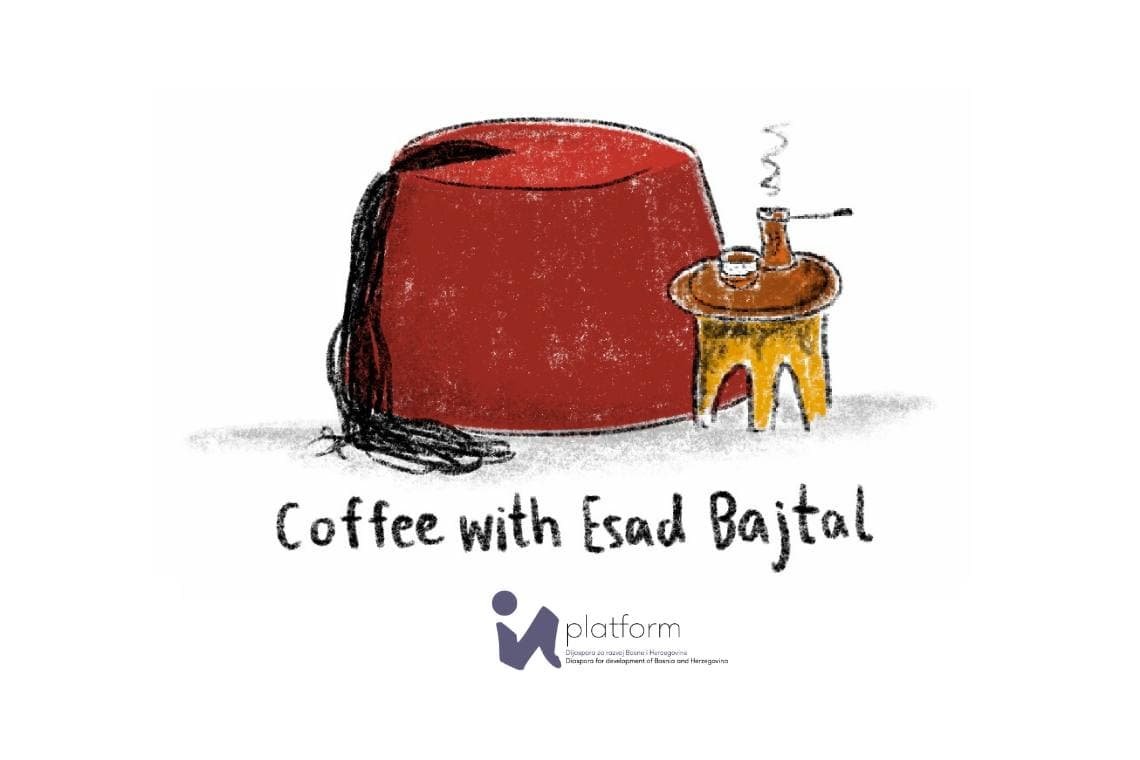Numerous participants attended a virtual coffee with Esad Bajtal
According to the esteemed BiH sociologist Esad Bajtal, Sevdalinka is most often associated with the song, but it is also reflected in themes that correlate with war, peace, jealousy, life, death, and yet without the addition of pathos. It is she who fascinates our dear friend, Mr. Bajtal, who, as he says, could study it all his life. It was to Sevdalinka that he dedicated the work "Sevdalinka alhemija duše".
Introduction to sevdalinka
The great literary and critical figure of Sarajevo, Jovan Kršić, said about sevdalinka in 1939: "Like any great art, sevdalinka has its real basis, its origin and its entire theme are conditioned by the life of the Bosnian town and social events in it. Songs and the most beautiful among them, was created in a beautiful šeher on Miljacka, under Trebević ”.
Etymologically, the term sevdalinka comes from Turkish sevda (love) and Arabic säwdā ’- black, black bile - one of the four basic bodily substances, which (according to the beliefs of the ancient Arab or Greek doctors), are found in the human body. As the cause of severe melancholy and irritability, love in the East at that time was associated with black bile (the physiological cause of this mood) and was called - säwdā ’. The Turks took the word from the Arabs, and the Bosnians added their "h" to it. From then until today, the term sevdah carries a specific semantic color of our emotional reality. And, along with it, there is the inevitable sevdalinka, as a derivative and label for a song of immense sorrow, the voice of immeasurable love pain and simultaneous enjoyment of it. Thus, the very term sevdah semantically covers what we see as an intense, song-silenced and, at the same time, stimulated love burnout in longing and the common flame of heavy dert and singing emotional ecstasy.
According to Bajtal, Sevdalinka is not taken over as a finished product, nor is it a mere copy of something else. It is a derivative of the accompanying life circumstances, an ambientally carved melopoetic story. At the same time, Bajtal adds, Sarajevo is a paradigmatically exemplary picture of such an environment. The architecture of the Bosnian house, which is represented in the capital of Bosnia and Herzegovina, will prove to be the main factor in the emergence of sevdalinka. Indispensable water, fountain, and fruits and flowers of Sarajevo courtyards had an inspiring effect on the creation of sevdalinka. Bašćansko Sarajevo was sung, not only in sevdalinka, but also in other lyrical poetry of that time.
Sevdalinka is also a kind of psychotherapy because it allows both the one who sings it and the one to whom it is sung a partial self-discharge. In sevdalinkas, the exclamative "high" is often noticeable, which best describes pain and futility, fear and sorrow, horror and admiration, but fantasy, daydreaming and fantasy are also noticeable. Therapeutic cathartic potential is actually released from sevdalinka.
This one-hour lecture is just an overture to the next virtual coffee with our guest, therefore, the organizers of this event, representatives of the i-Diaspora invite you to, if you are not this time, attend the next coffee.
You will soon be able to watch a video of the virtual coffee held on May 18 on our You Tube channel.
Note: Copying parts or the entire text is allowed with the obligatory citation of the source.

